Jim Walmsley’s Insane Day at Western States
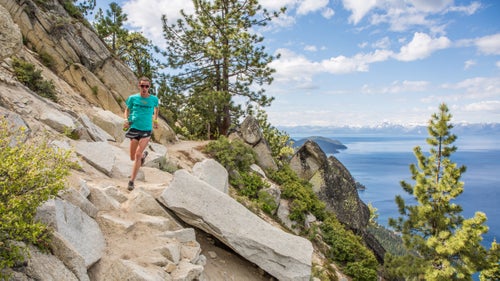
For the first 93 miles of last weekend’s Western States 100, 26-year-old Jim Walmsley was on pace to shatter the course record. Spectators following Walmsley’s progress—both along the trail in Northern California and via social media—were dumbfounded: Western States is considered one of the most competitive ultras in the world, and this was Walmsley’s first-ever 100-mile race. Then, just seven miles from the finish, he disappeared.
For well over an hour, an eternity even by ultrarunning standards, the Flagstaff native was nowhere to be found. Walmsley had missed a tight left turn and veered well off course. A crew of photographers finally spotted him lying on the 105-degree pavement of Highway 49. He’d given up the record, the lead, and, realistically, any chance of a top 10 finish.
Whereas some might have thrown in the towel, Walmsley zombie-walked his way back to the course and, eventually, to the finish line. We had the chance to talk with Walmsley to get an inside look at how it all unfolded.
Photo: Three weeks before the race, Walmsley left his home in Flagstaff, Arizona, to attend the Mountain Pulse Running Camp in Lake Tahoe, California. “I was coming off of by far the biggest and best training of my life, including back-to-back 140-mile weeks. My time in Tahoe was really great for sharpening the saw and just dialing in everything I’d need for a good race.”
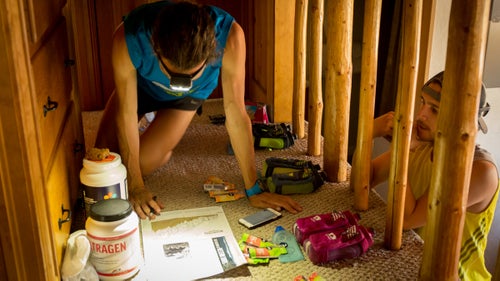
Following the Mountain Pulse Running Camp, Walmsley headed south. He spent the week preceding Western States in Sacramento with his pacer, James Bonnet. “This was a time to do some final heat training and to dial in my hydration, nutrition, and gear.”
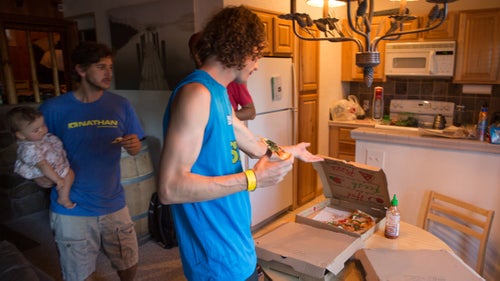
Walmsley, who is a vegetarian, says his go-to pre-race dinner is a margarita pizza. “The golden rule is not to overeat. I learned this the hard way back in high school. On more than one occasion I overdid it the night prior to racing and paid for it dearly the next morning.”
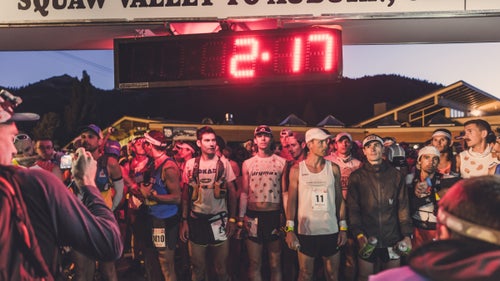
Walmsley believed his fitness would give him an opportunity to break the course record, and he wasn’t afraid to say so. But on race morning, those thoughts dissipated. He toed the starting line with laser-like focus, his mind totally in the moment. “I released all preconceptions and just zeroed in on racing,” he says. “I wanted to be aware of what was happening inside of me and around me, and that’s it.”
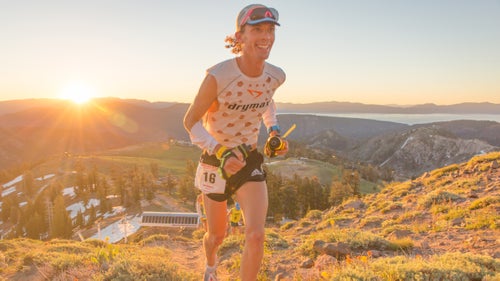
Come race day, Walmsley says he started out pretty quick, but not intentionally. “I really tried to be conservative. I knew it would be a hot day and didn’t want to force anything.” Nonetheless, just 16 miles into the race, Walmsley was on pace to break the course record (14:46:44, set by Timothy Olsen in 2012). “If you have told me I’d ever be 15 to 30 minutes up on the course record, I would have laughed at you and said that’s the stupidest race plan ever. But on the day, I was feeling great.”
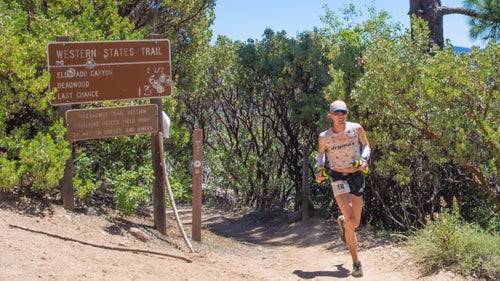
For the first 60 miles of the race, Walmsley was on fire. “I kept on telling myself the race doesn’t start until mile 62,” he says. “But I had just never felt so invincible before. Everything was clicking. It was truly magical.”
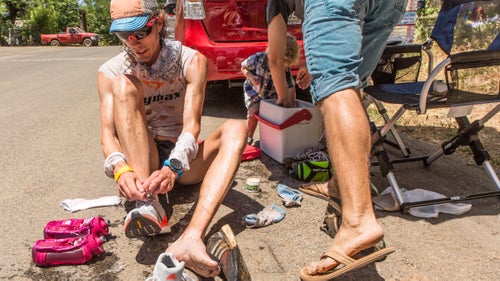
On more than one occasion, Walmsley’s unexpected and intrepid pace caught aid-station volunteers by surprise. “I’d get to an aid station hoping for some slices of watermelon, but when I’d get there I’d see a whole watermelon that hadn’t even had a knife near it,” he says. “I got to one aid-station and the volunteers were still in the middle of their pre-race meeting. But I can’t really blame them, I mean no one, myself included, could have planned for what was going down. The volunteers were great: we adapted on the fly and I got what I needed.”
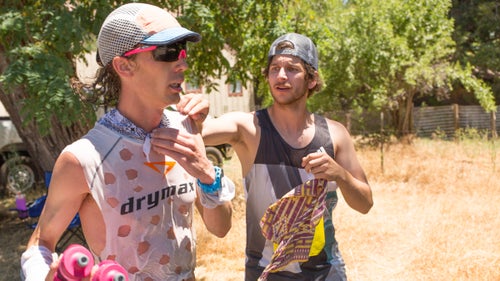
Competitors at the Western States 100 are allowed to pick up a pacer at mile 62. Walmsley’s pacer, James Bonnet, is a highly-accomplished ultrarunner himself: he’s run Western States four times, and in 2005, at 18-years-old, Bonnet became the youngest finisher in the race’s history.
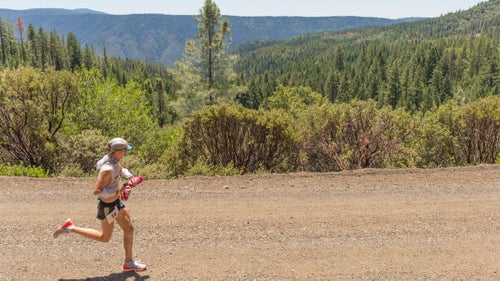
After just seven miles together, Walmsley dropped Bonnet. While waiting for Walmsley, Bonnet had eaten a burrito that likely contained undercooked meat. “Things were coming out of him both ends just six miles into the run,” says Walmsley. “A total freak accident. But in a race, stuff like this happens, and you just have to keep going.”
![Now running solo and approaching the infamous American River crossing at mile 78, Walmsley had put nearly 40 minutes between him and the course record. But then chaos struck. “Last year, [competitor] Rob Krar took a couple of strokes with one hand while holding onto the rope with the other,” says Walmsley, “and he was the fastest person to cross the river. So I did the same. It felt really good, so I thought: why not try to swim with both hands? Not a good idea. The current caught me and swept me downstream.”](https://cdn.outsideonline.com/wp-content/uploads/2016/06/28/western-states-pg-10.jpg?width=500&enable=upscale)
Now running solo and approaching the infamous American River crossing at mile 78, Walmsley had put nearly 40 minutes between him and the course record. But then chaos struck. “Last year, [competitor] Rob Krar took a couple of strokes with one hand while holding onto the rope with the other,” says Walmsley, “and he was the fastest person to cross the river. So I did the same. It felt really good, so I thought: why not try to swim with both hands? Not a good idea. The current caught me and swept me downstream.”